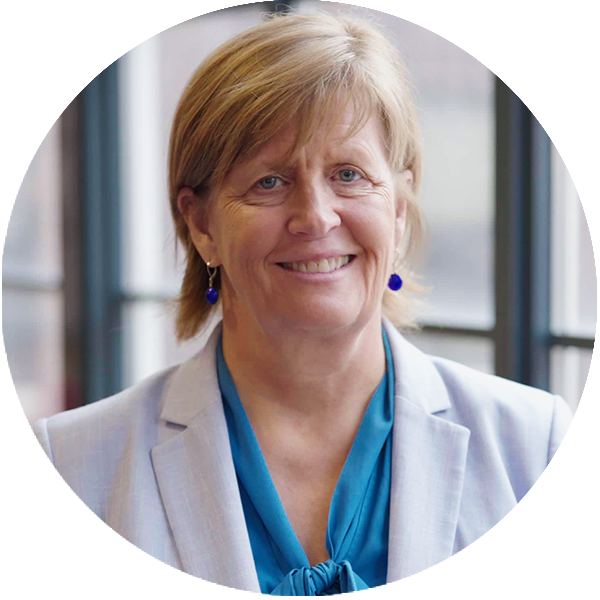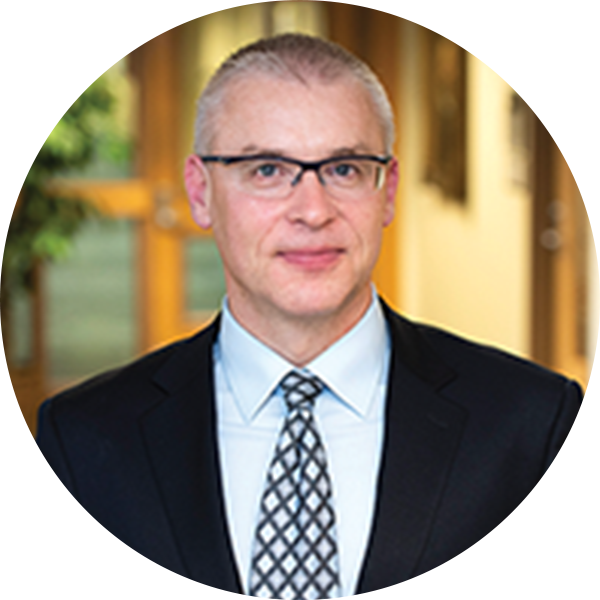The story of a resilient patient and the resourceful surgeon who’s got his back
Nothing stops 3-year-old Norman Sernick Kennedy. Not coming into this world with physical differences. Not a pandemic shutdown that made getting help seem like mission impossible.
Not several major surgeries in the first months of life. And certainly not bulky, rigid casts on both arms and hands.
In fact, Norman had no problem learning to crawl with a first set of them. And then, at nine months, when he found himself in a second, he walked.
“He just finds a way,” his astounded parents, Christine Kennedy and Alex Sernick, say.
Adds Dr. Ann Van Heest, the University of Minnesota and M Health Fairview pediatric hand surgeon who has become an indispensible ally–and friend:
“Norman is such a wonderful kid. It’s a joy to be on this journey with him and his family.”

There were definitely a lot of sleepless nights
Norman was born on the very first day of the shutdown with a hole in his skull, an eyelid that wasn’t fully formed and fingers on both of his hands fused together.
An ultrasound at 20 weeks captured those worrisome issues, but it wasn’t until Dr. Van Heest met Norman that the Burnsville family finally had a diagnosis and, more importantly, hope.
“It’s what we call amniotic band syndrome (ABS),” Dr. Van Heest says. “It affects about one in every 10,000 kids -- not common, but not rare either, especially for us.
“We get referrals from the five-state area.”

Something that just happens—like lightning striking.
ABS occurs when fibrous bands from the amniotic sac get tangled around a developing fetus.
While the cause is unknown, researchers say it isn’t genetic, a huge relief to Christine and Alex who have since added little sister Emilia to their fold.
In Norman’s case, the biggest challenge were the fibers that had balled his tiny hands into permanent fists.
“It was really hard at first,” Alex recalls. “We didn’t know what his future looked like, what he’d be able to do and not be able to do.”

It wasn’t just Dr. Van Heest. It was her entire staff
Dr. Van Heest and her team’s first priority was to simply open M Health Fairview Orthopedic Clinic in Minneapolis for surgery.
Not an easy task when COVID-19, especially in those confused early days, had the whole world running for cover.
The case they made won the day: With Norman’s fingers stitched together, he’d be unable to perform critical developmental tasks, like pinching his thumb and forefinger together.
Two surgeries later—along with an emergency or two that goes with the territory of having an action-packed boy in casts and on pain meds—all ten fingers were freed.
Dr. Van Heest will continue to monitor his growth — watching to see if there are further tweaks needed.
“The function of Norman’s hands is very good,” she says. “He’ll be able to hold a pen, button buttons, zip zippers. And we’ll be able to help him learn to do other things, too, so he can lead an everyday life.”

I’ve treated thousands of kids with hand differences
As a competitive rower in medical school, Dr. Van Heest set her sights on a career helping athletes with sports injuries.
But then, while doing a rotation at a children’s hospital, she met a patient “like Norman” who changed everything.
“I realized that these kids are born with differences they didn’t ask for,” the doctor says. “It’s a privilege to be a part of their life and to try to give them a little bit more to work with as far as their hands and how they interact with the world.”

They might not look like our hands. But they’re his.
On a recent visit, Dr. Van Heest presented Norman with a gift that shows how her care goes far beyond the operating room: A children’s book she co-authored called “Proud To Be Me.”
It’s meant to teach kids about physical differences, and, ultimately, to love and accept themselves for who they are.
Alex, in response, rolls up his right shirt sleeve to show the doctor that he, too, is thinking of the road ahead and the bullies Norman might encounter. It’s a tattoo that features an X-Ray taken of Norman’s tiny hands after surgery.
Alex says it’s a symbol of his unconditional love for his boy: “His personality is so kind, so welcoming. It’s a tribute not just to the love he got from us but the doctors and nurses he sees.”
Helping Norman Love and Accept Himself Through Ink
Alex, Norman’s dad, talks about his tattoo that features an X-Ray taken of Norman’s hands.
PUTTING DISCOVERY INTO PRACTICE
M Physicians are an extension of the University of Minnesota Medical School. As Medical School faculty, they are always looking for new and better ways to treat patients, whether in the laboratory or the clinic. And through clinical trials, cutting-edge therapies are sometimes available to patients when the standard of care is no longer enough.
What is Academic Medicine?
Most medicine is practiced within what is called “the standard of care.” Simply put, “standard of care” is the treatment that is commonly accepted for treating illness. This is a good thing! It means that patients receive treatments that are known to be generally effective and reliable.
The goal of academic medicine is to treat patients while looking for better therapies. It takes the toughest problems from the clinic and looks for solutions in our research. Many of our physicians — leaders in their fields — are also scientists.
When a patient faces an illness that requires treatment that exceeds the standard of care, academic medicine can provide access to newer therapies.



